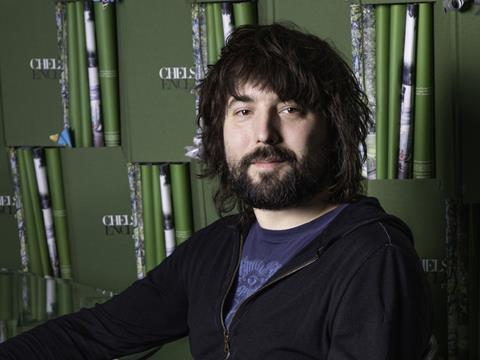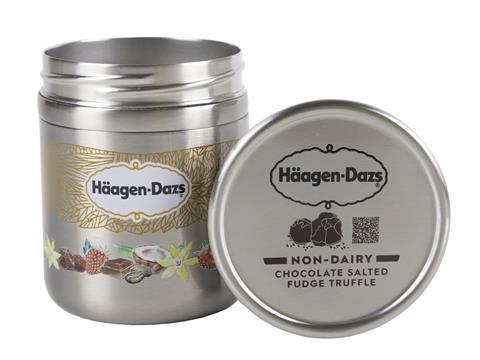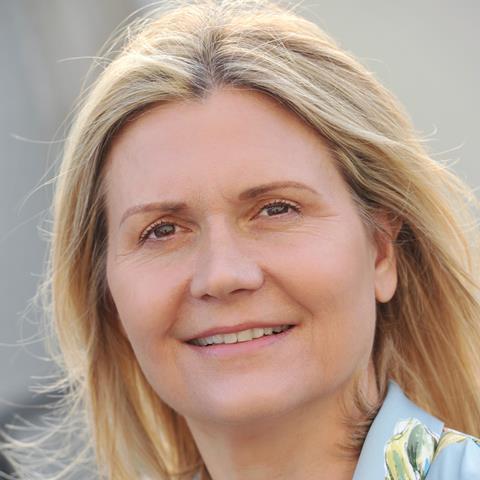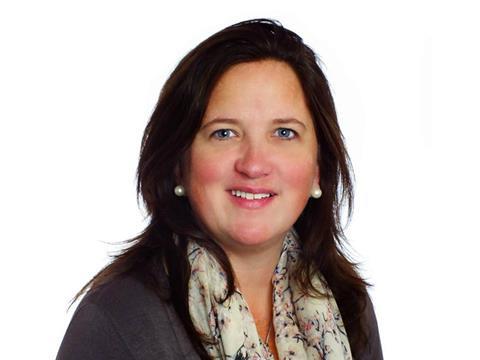
The last year has seen rapid development in the construction of a circular economy in plastics, with most of the leading brand owners and many of the leading converters and chemical companies making substantive pledges on recyclability and value-chain collaborations such as the Ellen MacArthur Foundation and CEFLEX mapping out how to marry design for recyclability with a viable recycling economy. Meanwhile, some voices suggest that even universal recycling of plastics would be no panacea. The recent launch of Loop™ by TerraCycle and a coalition of CPG giants has the potential to bring reusable packaging to the mainstream – and raises big questions about the relative merits of recycling vs. reuse.
Launched at the World Economic Forum in Davos, Loop is an online shopping concept that challenges our reliance on single use packaging. As Packaging Europe reported earlier this year, Loop proposes to send consumers products in customised, durable packaging, which is subsequently collected for reuse rather than recycling. Loop’s vision of an inverted ownership model, wherein brands retain ownership of the packaging, not only benefits sustainability but presents an opportunity to invest in high-end materials that enhance consumer experience.
Arguments for reuse
“Recycling is critically important and using recycled material is an important short-term step but it doesn’t solve our core waste problems,” TerraCycle’s CEO Tom Szaky told Packaging Europe in January. “One of the starting points for Loop was questioning the idea of consumers owning the packaging of the products they buy. This provides an incentive for the manufacturer to make it cheaper, and the cheaper and lighter it is, the less economical it is to recycle. On the other hand, if the manufacturer takes ownership and responsibility, packaging starts to be treated as an asset in the P&L.”
Disposable packaging became popular in the 1950s as it promised a cheaper, more convenient lifestyle. Tom Szaky regards Loop as a means to continue to deliver affordability and convenience at the same time as eliminating the waste. This is facilitated by the economic depreciation of reuse: expensive packaging grows cheaper the more times it is used, and Loop claims the costs are similar to SUP when collection and washing are factored in.

But what of Loop’s overall environmental footprint? While there has been considerable societal pressure in favour of reusable systems, to date the arguments have tended to be more intuitive than empirical. According to TerraCycle, Life Cycle Assessments have been carried out under usage pattern assumptions that demonstrate an opportunity to cut carbon as well as packaging waste. Results vary from product to product but, according to TerraCycle, tend to reach parity with single use packaging once they undergo three lifecycles.
The wider industry will of course be curious to scrutinise this data, and Packaging Europe believes we are in urgent need of a whole body of new research into the relative carbon footprints of reuse and recycling across the spectrum of consumption contexts, materials, geographies. LCAs are notoriously slippery entities, whose conclusions can be significantly changed with tweaks to parameters and assumptions. This grey area in our collective understanding and standards has to be better defined if we want to accurately map out the respective roles of reuse and recycling for an optimised sustainable ecosystem.
Packaging Europe reached out across the value chain for perspectives on the wider recycle vs reuse dilemma that Loop has put at the top of the agenda. Here’s what we heard:
The brand owners
Simon Lowden, president of PepsiCo Global Snacks Group:
Loop is one of a range of initiatives PepsiCo is exploring as part of a drive to reinvent our packaging. We are also looking beyond the bottle and beyond the bag for our brands. Our recent acquisition of SodaStream is part of this approach, as are our breakthrough innovations like Drinkfinity and beverage dispensers like Spire for foodservice and Aquafina water stations for colleges and universities. Packaging sustainability is a complex and multi-faceted challenge, requiring different solutions depending on the product, the market and the consumer proposition. We are exploring a number of different solutions as we work to achieve our vision for more sustainable packaging.
There is no one-size-fits all solution. Achieving a world in which plastics need never become waste will require different packaging and distribution models in different product, market and consumer contexts. We are exploring a number of different solutions.
Virginie Helias, VP & chief sustainability:
We are now moving the Ambition 2030 Roadmap into action and one of the goals was to inspire and enable responsible consumption. There are many ways we want to do that but one of them is to drive 100 per cent of packaging towards reusable or recyclable. We’ve been doing a lot of innovation on the side of recyclability, but until now we hadn’t done so much on reusability.

Reusability is a new model and we absolutely want to explore this. Based on the consumer reaction we have had in the past twelve months where we’ve been testing it with a few households we believe there is real potential with this new way of shopping. It’s not just about reusability – it’s about our ability to invest in superior packaging. This is the key in brand building- basically the ownership is changing from consumer to manufacturer in terms of assets. It gives us great flexibility to invest in the packaging and that’s why some of the packaging we have developed uniquely for Loop has great aesthetics and functionality.
However, recyclability is also a priority for all our brands. Today about 86 per cent of our packaging is recyclable so we are well on our way to attaining our 100 per cent target. We’ve been active in R&D, for example the PureCycle initiative, which has developed a technology that restores used polypropylene to a virgin-like state.
In short, we are very active on both recycling and recyclability. We don’t leave any stone unturned.
Glass
Michael Delle Selve, senior communications manager at FEVE (The European Container Glass Federation):
Reuse models in packaging have existed for a very long time and there are many examples of reusable packaging systems in place, notably in the beer sector. So we do not see a rise in reuse models; on the contrary, many products in reusable packaging have switched to single-use due to the convenience and on-the-go markets. Now the announcement of the TerraCycle Loop initiative is different. It is a response to the unprecedented media and consumer attention on single-use plastics, which is driving brands and entire sectors to seek alternatives. In the meantime, these same brands and sectors are investing massively in the plastic recycling chain to increase the recyclability of the materials and the end-markets for plastic recyclates. Having said that, the TerraCycle model mixing digital technology and online shopping could certainly play a role in improving the consumer experience of using refillable or reusable packaging.
Reuse is a simple concept, but there are many different types of reuse whether the packaging is for transport, business or consumer use. For instance, wood pallets are reused for carrying goods, plastic crates are reused for carrying packed products, or glass bottles are reused for refill. Given that transport and business packaging tends to be organised within a well-defined logistical system, which makes the return of the packaging traceable and easier to control, we tend to consider that consumer reuse is the most difficult of the reusable systems to put in place. It requires an upfront investment on a packaging fleet, and a consumer incentive on the bottle to ensure it is returned and therefore optimise the investment. In terms of consumer reuse, glass bottles are the best performer and can go up to 40 rotations on the market. It can be a very efficient and sustainable solution to maintain products in a short supply chain, provided there is a consumer culture supporting reuse. But it is not always the best approach, and it depends very much on the size of the market. Beyond the local level, single-use is usually a better approach, provided the packaging material is recyclable and effectively recycled. Glass performs on both levels: it can be reused, but it is also a permanent material that is endlessly recycled in a closed loop.
LCA-based indicators (like carbon footprint) are dangerous to generalise. An LCA is generally conducted for specific situations and the conclusions are only valid in this specific context. Energy mix of the region considered, transport distance, breakage rates, number of refills, cleaning process, furnace efficiency, cullet rate, recycling allocation methodologies, packed volume, bottle weight, etc. are all critical factors that need to be specified before any conclusions can be drawn.
That being said, when trying to have all these parameters equal when comparing (which does not always makes sense), reusable glass is one of the best performers (all packaging considered) in LCA for local market.
Vincent Millot, future product marketing manager, Markem-Imaje:
While it’s better to recycle than to send something to landfill, there are still two resource-intensive cycles involved: initial production and subsequent recycling. A trend in some Latin American countries, for example, is to refill both glass and PET bottles. However, the industry has been widely impacted in the recent past by traceability issues linked to ink adhesion. Inks need to be strong enough for product codes to stay on from production through consumption but still come off easily upon return.
To address this issue we launched an improved version of our MB243 ink which is delivering sufficient adhesion in reusable returnable glass bottles and comparably high performance in RefPET. With the increasingly loud debates in mature markets about the viability of refilling versus recycling and having solved the adhesion issue in returnable bottles − thus ensuring traceability even in a refillable setting− we are not surprised to see that this emerging market model is currently being reimplemented in the developed world.
Corrugated
Dr Liz Wilks, European director, sustainability & stakeholder outreach, Asia Pulp & Paper:
A circular economic system needs to be implemented, an economy built around both reuse and recycling. It is clear that there are a number of benefits of the reuse model. For example, 95 per cent of the value of plastic is gone after the first use. Reuse keeps material out of the waste stream, thereby securing its value whilst reducing energy consumption and extending the life of the original raw material. In the case of pulp and paper, with a virgin fibre product, assuming that other materials can be extracted easily from it, can be upcycled up to seven times and thereafter safely be disposed of. The key is to ensure that materials can be easily separated by the consumer and the waste stream, then those which can be re-used have the infrastructure to be able to be re-purposed.
Crucially – among other benefits of the reuse model - with reports highlighting that England’s landfill sites will be overflowing by 2022, reusing items can reduce the amount of material we send to the landfill. With the EU agreeing that, by 2020, member states must recycle 45 per cent of all plastics, rising to 60 per cent by 2025, it will be interesting to see how countries across the continent respond to this ambition and the impact it has on our landfill sites.

Recycling is a key element of the product lifecycle. In the case of pulp and paper, without the original pulp, recycling wouldn’t be able to take place but in the same vein and it is important to make use of the product’s technical features to extend the life of the material as much as possible. We need to be thinking of product innovation with the end of life in mind and the ability to re-integrate with nature, whilst respecting the function of the packaging.
Plastics
A statement from Amcor:
Increasing collection, recycling and reuse worldwide requires new thinking and ways of doing things, and collaboration by all stakeholders. We know that success will only come from a combination of lots of different approaches, so we are watching and learning about all of them. For performance and recyclability, it remains true that plastic packaging is typically the best solution for consumers and the environment.
Amcor makes reusable PET beverage bottles that are returned, cleaned, and refilled multiple times (today in several Latin American countries) and flexible packaging, for products like dish soap, that consumers use to refill dispensers at home.
In general, packaging reuse programmes work best in small geographies where high volumes of products are used, but are typically less suitable today for large-distribution geographies. Packaging reuse requires reverse logistics, cleaning, inspection, and refill facilities, with total costs that can be much higher than conventional packaging, even when the cost of recycling is included.
Amcor is committed to developing all its packaging to be high-performing and recyclable and reusable, and a leader in long-term solutions. Success will come from a combination of lots of different approaches, so we are watching and learning about them all.



















